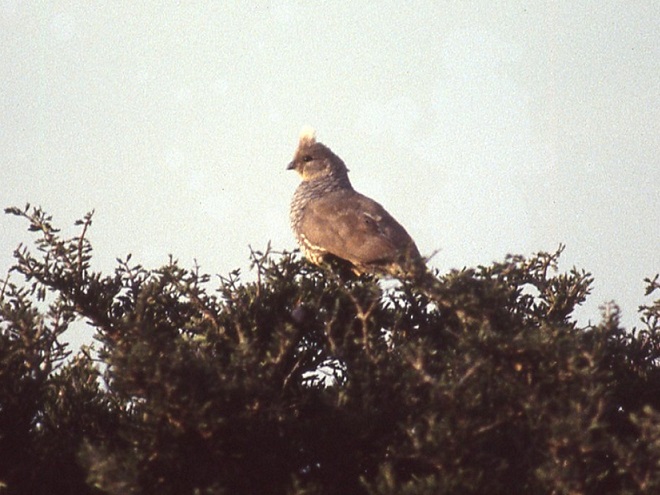Back in late May of 1983, four members of the Lancaster County Bird Club—Russ Markert, Harold Morrrin, Steve Santner, and your editor—embarked on an energetic trip to find, observe, and photograph birds in the Lower Rio Grande Valley of Texas. What follows is a daily account of that two-week-long expedition. Notes logged by Markert some four decades ago are quoted in italics. The images are scans of 35 mm color slide photographs taken along the way by your editor.
DAY NINE—May 29, 1983
“Falcon Dam State Park, Texas”
“To the spillway area after breakfast and saw Ringed Kingfisher, Baird’s Sandpiper, and 2 Black-necked Stilts. Stopped to photograph the Swainson’s Hawk which had flown in a tree. Also saw a Blue Grosbeak.”
The Ringed Kingfisher (Megaceryle torquata) was notably larger than the Belted Kingfishers with which we were so familiar, so it was easy to identify. This was yet another tropical species found north only as far as the Rio Grande Valley of Texas. Baird’s Sandpiper was a pretty good find for this location in late May.

“We drove to Santa Margarita Ranch to search for the elusive Brown Jay.”
While en route to Santa Margarita Ranch, we stopped twice to photograph birds we spotted along the way.
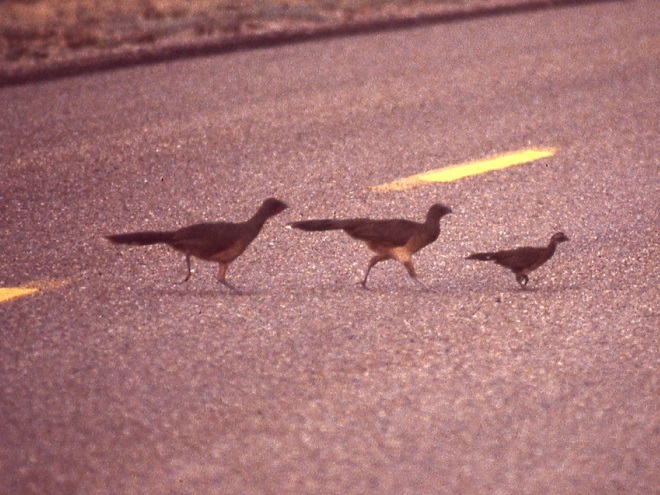
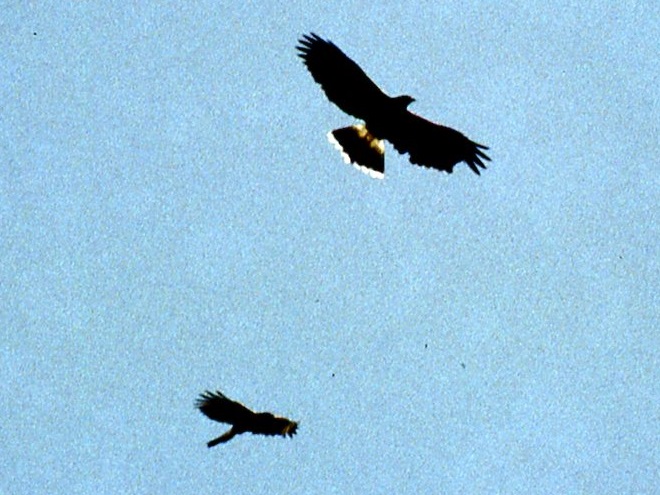
Beside the road just outside the entrance to the ranch, we observed a Verdin (Auriparus flaviceps), a tiny chickadee-like like bird with a yellow head and throat. Verdins reside in both thornscrub and desert throughout the southwestern United States and northern Mexico.
“Rancho Santa Margarita is a group of 8 houses. Cattle roam at will. We walked a long way along the river — No luck. Had lunch in the camper and repeated the morning walk. Cattle dung all over the place. The dung rollers were as interesting to watch as the leaf-carrying ants. Met a Mr. McQueary who had seen them 30 min. ago, so he led us to where he had seen them, but — No luck.”
Upon arriving at Santa Margarita Ranch intending to find Brown Jays (Psilorhinus morio), we drove over the in-ground cattle gate at the entrance and back the dirt driveway to the small cluster of houses where we parked. We checked in with a resident there and slipped them a dollar or two a head for letting us spend the day on their land. As we walked away from the houses, we noticed some intermittent movement in a pile of construction debris along the dirt road leading to the river. Initially thinking we may have caught glimpses of some small rodents dashing around, we watched patiently until we saw at least two Blue Spiny Lizards (Sceloporus cyanogenys) among the lumber and tin. The pair was obviously finding insects or other sources of prey there
To find Brown Jays, one of the five target species of the trip, Father Tom had advised us to follow the advice in James Lane’s A Birder’s Guide to the Rio Grande Valley of Texas. The recommendations contained therein brought us to Santa Margarita Ranch. As was the case upriver near Falcon Dam, the Tamaulipan Saline Thornscrub that covers much of the property turns abruptly to subtropical riparian forest near the banks of the Rio Grande where wetter soils predominate. The habitat was excellent, and we were certain the birds were there, but despite significant effort, we just couldn’t bump into Brown Jays at Santa Margarita Ranch.
We did however get good looks at another Hook-billed Kite sailing above the trees downriver. During our second walk, Harold, Steve, and I waded down a short section of the Rio Grande in hopes of getting better looks into an area of shoreline forest too thick to enter by land. Despite recent rains, the water was low, restricted by gates at Falcon Dam to little more than the flow needed to operate the turbines and generate electricity. We saw orioles, Red-billed Pigeon, and Great Kiskadee—but no Brown Jays.
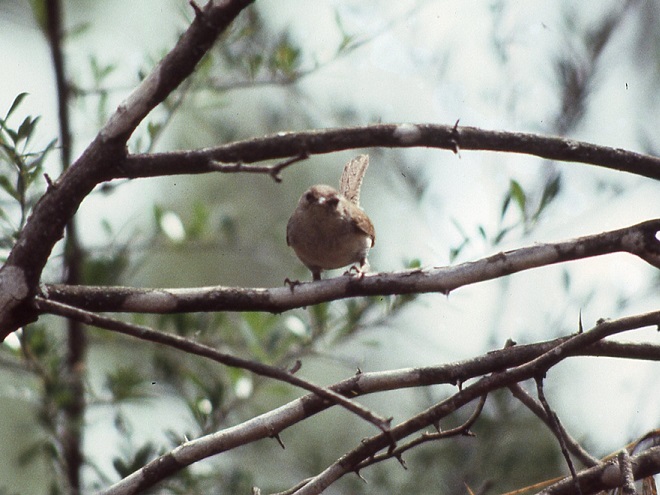
“On the way out…found a nest of Pyrrhuloxia and saw a 6 ft. snake hanging from a bush with a rabbit in his mouth. The snake caught the rabbit by the shoulder and it was working hard to get free. Finally the snake dropped the rabbit, and they both went out of sight.”
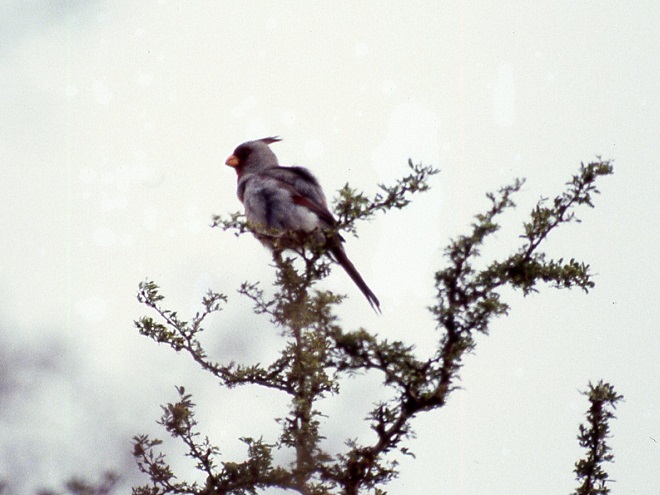
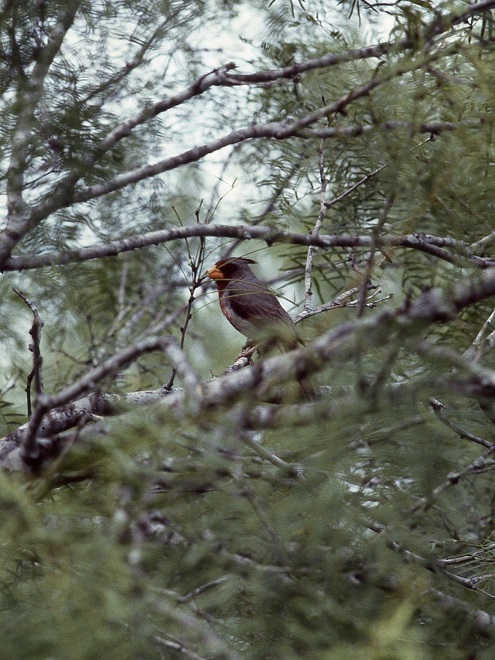
As we eased our way out the dirt road at Santa Magarita Ranch, we began hearing a blood-curdling series of squeals. Russ stopped the van and as we peered into the thornscrub, we could catch glimpses of an Eastern Cottontail thrashing around. At first we thought it had somehow become snagged in the quagmire of prickles on the dense vegetation. Then we spotted the snake draped over the shrubs and attempting in vain to lift the cottontail off the ground. The struggle, and the squealing, continued for several minutes as we labored to identify the snake. As the snake attempted to reposition the cottontail so that it could swallow it head first, the rabbit broke free and escaped. All was silent as the snake quickly fled as well. As it slithered away we could see just how long it really was—5 to 6 feet or more. You know, things really are bigger in Texas. Based upon its large size, overall tan-brown color, and the rapid speed with which it left the scene, we determined it was a Western Coachwhip (Masticophis flagellum testaceus).
“Back to the spillway at Falcon Dam — No luck. Met Ron Huffman who is leading a trip for 3 women. We will meet him at the spillway tomorrow AM early. Back at our camp site for supper — shower and shave. The Lesser Nighthawks were trilling late in the evening.”
During the evening, we found Black-throated Sparrow (Amphispiza bilineata) and Scaled Quail (Callipepla squamata) in the area of the campsite. Then, as darkness settled in, the calls of Common Pauraque, Common Nighthawks, and Lesser Nighthawks (Chordeiles acutipennis) commenced. We walked down the road to a spot where we could overlook a lower-lying area of thornscrub in hopes of catching a glimpse of some of these nightjars, particularly the latter species, as they patrolled for flying insects. But under cloudy skies and being miles from any man-made sources of light, it was too dark to see anything flying around.
